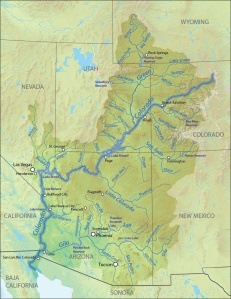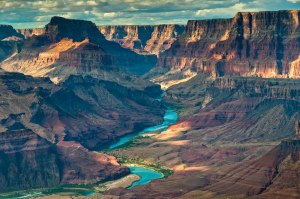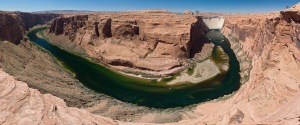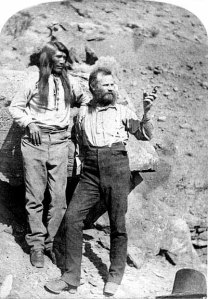The date is August 30th 1869, the place is the mouth of the Virgin River, where it springs from the Colorado River. Bewildered Mormon fishermen spy in the distance two boats and seven ragged men coming down the Colorado. Earlier that month, Brigham Young had instructed the Mormon populations living along the rivers to keep a look out for traces of the presumed suicidal exploration team headed by John Wesley Powell. Perhaps all, except for Powell, believed that the bid by the one-armed Civil War veteran to run the Colorado River from Green River Station to the Virgin River was madness, foolhardy and would surely claim the lives of all involved. (Dolnick, 2002). At the time, it was considered common knowledge that the Colorado River was not and would never be completely passable by man, let alone a crew which only had experience running rivers devoid of the terrifying white cap rapids that blanket the Colorado. The success of Powell’s crew and the symbolic filling of the blank spaces on the map changed the course of human geography along the Colorado River and in the American West forever. The fortitude and romanticism of Powell’s journey down the Colorado River, through the Grand Canyon would inspire other explorers and scientists of the time, as well as future scientists, conservation groups, writers and river runners. While Powell was the first to run the rapids through the Grand Canyon, his crew would certainly not be the last to view the magnificent canyon walls from the rapids below, as 26,000 people run the rapids through the Grand Canyon every year. Powell’s initial exploration of the Colorado as well as his second expedition are chronicled in his book Exploration of the Colorado and its Canyons, along with his observations of the surrounding terrain. Exploration of the Colorado would later inspire writers and conservationists alike, particularly Wallace Stegner a prominent writer and member of the Sierra Club. Stegner’s work for the Sierra Club included protesting the building of the Glen Canyon Dam which threatens the integrity of nearby Dinosaur National Monument. Renown American author Edward Abbey, like his professor Stegner, wrote heavily about the American Southwest and played an active role as an environmental activist, romanticizing plots to blow up major dams in the Colorado in his book Monkey Wrench Gang. The cultural impact of Powell’s expedition of the Colorado River is not only far reaching but heavily prevalent in areas of ecological conservation, outdoors recreation and American literature.
Bibliography:
Abbey, Edward. Desert Solitaire: A Season in the Wilderness. New York, NY: Touchstone, 1968.
Abbey, Edward. The Journey Home: Some Words in Defense of the American West. New York, NY: Penguin Group, 1977.
Abbey, Edward. The Monkey Wrench Gang. New York, NY: HarperCollins, 1985.
Dolnick, Edward. Down the Great Unknown: John Wesley Powell’s 1869 Journey of Discovery and Tragedy Through the Grand Canyon. New York, NY: HarperCollins, 2002.
Hardin, George. “The Tragedy of the Commons.” Science. no. 3859 (1968): 1243-1248.
Powell, John Wesley. The Exploration of the Colorado River and its Canyons. Mineola, NY: Dover Publications, 1961.
Stegner, Wallace. Beyond the Hundredth Meridian: John Wesley Powell and the Second Opening of the West. New York, NY: Penguin Books, 1992.






